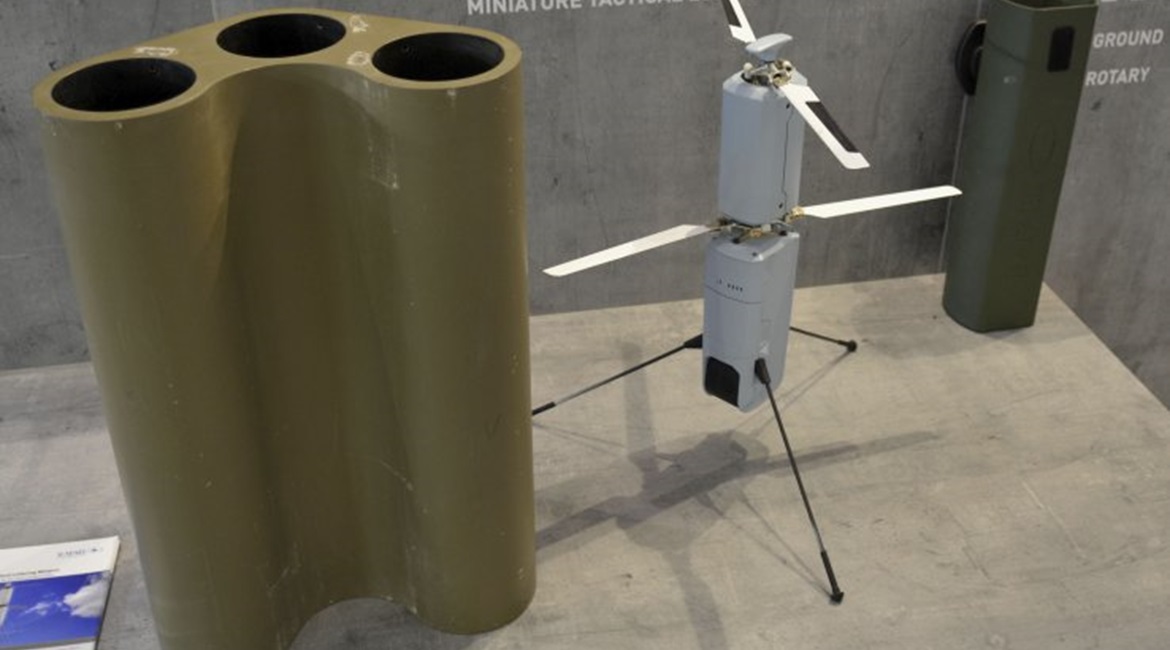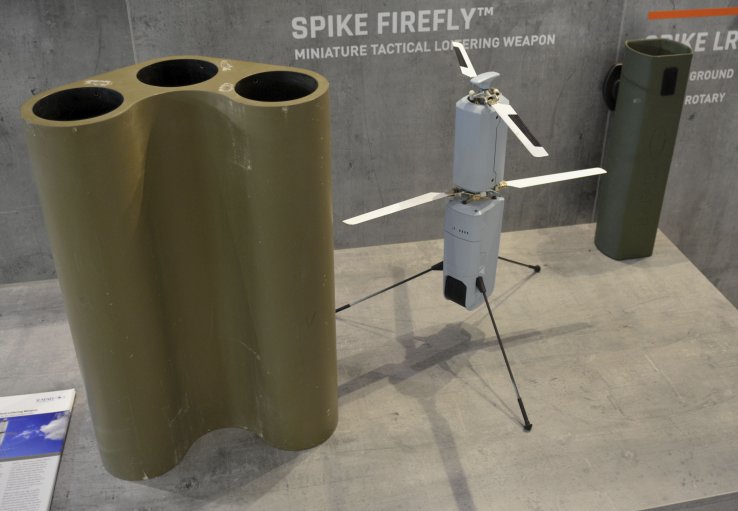
Rafael displayed a more refined version of its Spike Firefly loitering munition during the International Armoured Vehicles (IAV) 2020 conference held in London on 20-23 January, and revealed it has been integrated with vehicles.

A Rafael Spike Firefly munition is pictured in the middle, with a three-munition launcher for vehicles on the left, and a transport canister for infantry on the right. (Janes/Patrick Allen)
When it was unveiled in 2018, the Spike Firefly was presented as both a recoverable mini-unmanned aerial vehicle (UAV) and a loitering munition that enables dismounted soldiers to perform reconnaissance and engage targets beyond the operator’s line of sight.
During IAV, the Israeli company showed footage of trials that took place in the summer of 2019 of the system integrated with its testbed vehicle for the Israeli military’s Carmel programme, which is developing technologies for next-generation armoured fighting vehicles.
Rafael said the Spike Firefly is now ready for integration with other vehicles. It showed computer models of a newer version of its Samson 30 mm turret that can carry a multi-mission payload that could include multiple Spike Firefly munitions.
The munition takes the form of a small UAV weighing less than 3 kg and is powered by coaxial counter-rotating two-blade propellers that fold away for storage. It has a maximum speed of 60 km/h, can dive at 70 km/h, and can fly in wind speeds of up to 36 km/h.
An infantry system consists of three munitions, a ruggedised control tablet, and a backpack that together weigh under 15 kg. A munition is pulled out of its transport container and set up on three retractable legs for launch.
Looking to read the full article?
Gain unlimited access to Janes news and more...




